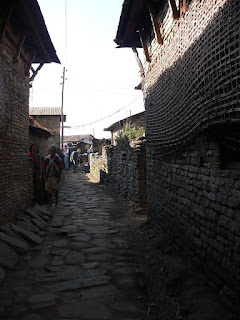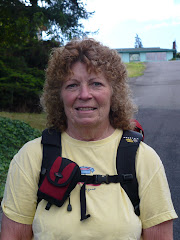
 This group of trekkers jelled, out of self defense, as the days of sweat rolled on and the stories of travels piled up. Toilet Temple tales were exchanged, someone was locked in a pristine local, others fell, slid or were slandered along the trails, "song challenge" winners bragged while losers cried foul, beer and rum took away the chill and loosened up the lips, and each person was humbled by the people they met in this peacefully intriguing country. Most importantly, everyone felt the powerful beauty and touch - of the mountains - in an internally sustainable way.
This group of trekkers jelled, out of self defense, as the days of sweat rolled on and the stories of travels piled up. Toilet Temple tales were exchanged, someone was locked in a pristine local, others fell, slid or were slandered along the trails, "song challenge" winners bragged while losers cried foul, beer and rum took away the chill and loosened up the lips, and each person was humbled by the people they met in this peacefully intriguing country. Most importantly, everyone felt the powerful beauty and touch - of the mountains - in an internally sustainable way.


On a trek, making friends is a priority because there is so much to discuss. For instance, there are no rules posted on the wall of the "Toilet Temple." Do you back in or go in forward? Is it legal to hold on to a pole, or will that result in a collapse, sending you down for the count? If you step in someone else's misdirected pooh,
is there any recourse? Making friends on a trek
is a must.
important and often means extra helpings at dinner or whistling entertainment along the trails. Sherpa guides are friendly, interesting, fun-loving people. They have smiles and encouragement for the young, but also for the old, the tired and the downright lazy. Sherpas are the laughing gas that holds a trek together.
Our experiences will linger long after Arlene and Analise, our trip leaders, have unpacked their memories and stored them with so many others. What will make us more memorable than those before us? Perhaps it is the friendships we walked away with or the good times we forged, or hopefully, our commitment to remember all we learned from the Nepali people who shared their "Nameste's" so graciously.














































